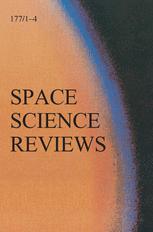
公表論文18 Jan 2020
Diffuse and Pulsating Aurora
公表論文/

| 発表年月日 | 2015年7月13日 |
|---|---|
| 著者 | Hosokawa K. and Y. Ogawa |
| 雑誌名 | Journal of Geophysical Research - Space Physics |
| 査読の有無 | 有 |
| 巻 | 120 |
| ページ | 1ページ〜15ページ |
| DOI | doi:10.1002/2015JA021401 |
| URL | http://onlinelibrary.wiley.com/doi/10.1002/2015JA021401/abstract |
We have statistically analyzed data from the European Incoherent Scatter (EISCAT) UHF/VHF radars in Tromsø (69.60°N, 19.20°E), Norway, to reveal how the occurrence of pulsating auroras (PsAs) modifies the electron density profile in the ionosphere. By checking five winter seasons' (2007–2012) observations of all-sky aurora cameras of the National Institute of Polar Research in Tromsø, we have extracted 21 cases of PsA. During these PsA events, either the UHF or VHF radar of EISCAT was operative and the electron density profiles were obtained along the field-aligned or vertical direction near the zenith. From these electron density measurements, we calculated hmE (E region peak height) and NmE (E region peak density), which are proxies for the energy and flux of the precipitating PsA electrons, respectively. Then, we examined how these two parameters changed during the evolution of 21 PsA events in a statistical fashion. The results can be summarized as follows: (1) hmE is lower (the energy of precipitation electrons is higher) during the periods of PsA than that in the surrounding interval; (2) when NmE is higher (flux of PsA electrons is larger), hmE tends to be lower (precipitation is harder); (3) hmE is lower and NmE is larger in the later magnetic local time; and (4) when the AE index during the preceding substorm is larger, hmE is lower and NmE is larger. These tendencies are discussed in terms of the characteristics of particles and plasma waves in the source of PsA in the magnetosphere. In addition to the statistics of the EISCAT data, we carried out several detailed case studies, in which the altitude profiles of the electron density were derived by separating the On and Off phases of PsA. This allows us to estimate the true altitude profiles of the PsA ionization, which can be used for estimating the characteristic energy of the PsA electrons and better understanding the wave-particle interaction process in the magnetosphere.
カテゴリー:公表論文